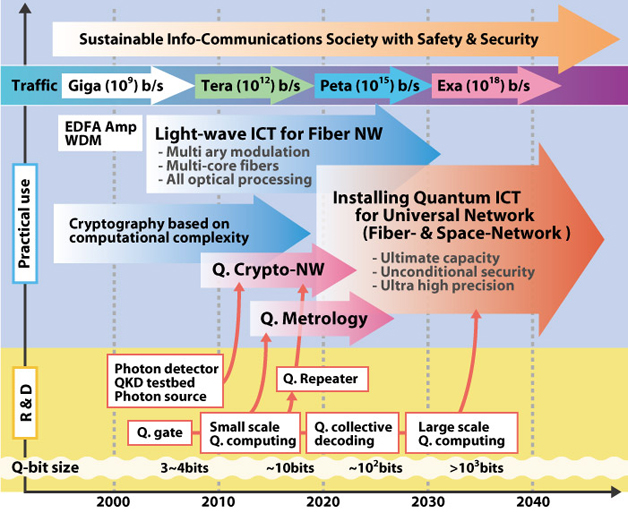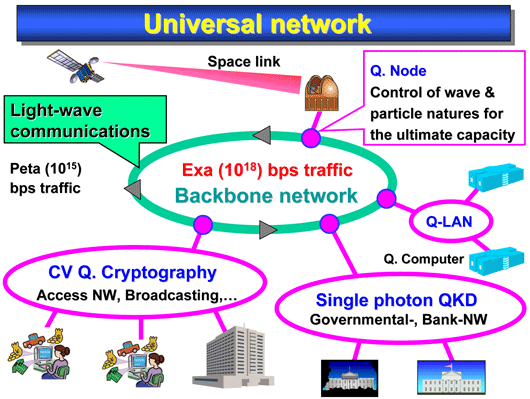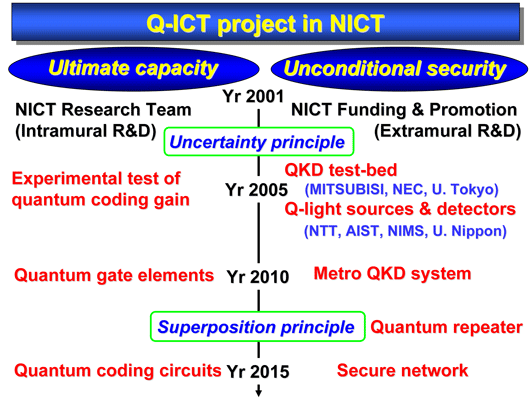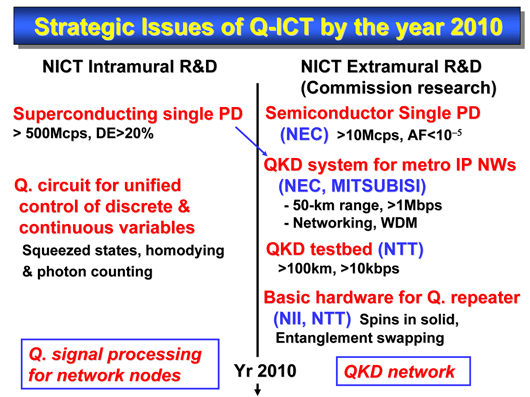Optical communications are utilizing full potential of the wave nature of light by controlling amplitude and phase for every available modes. This kind of light-wave ICT continues to sustain the increasing capacity demand for future network over a few decades, realizing the network traffic of Peta (1015) b/s.
On the other hand, the information security, which is a more urgent demand, is now ensured by cryptography based on computational complexity of mathematical problems. But this will not last unfortunately. Actually they are always threatened by technological advancement.
Quantum cryptography provides a mean to ensure the information security by the laws of quantum mechanics. Several protocols of quantum key distribution (QKD) such as BB84 and BBM92 have been certified by the unconditional security proofs, which means even any technologies cannot hack them. Fortunately this is within the reach of recently developing technology of single photon detector. So the first application of quantum infor-communications technology (Q-ICT) is QKD technologies in 4 years, which are especially for government chartered networks and bank networks.
The next application of Q-ICT will be quantum metrology, such as a new clock and optical sensing, using small scale quantum computing. They will start to be used in particular institutes and companies after 2010. Quantum repeater, which is a key to extend QKD network and also quantum-enhanced network, is a bit challenging technology, and it will take another decade for practical use.
In 15 years, installing various Q-ICTs to fiber- and space-network will begin. When large scale quantum computing is realized, we can realize the universal network with the ultimate capacity, the unconditional security, and the ultra high precision.











